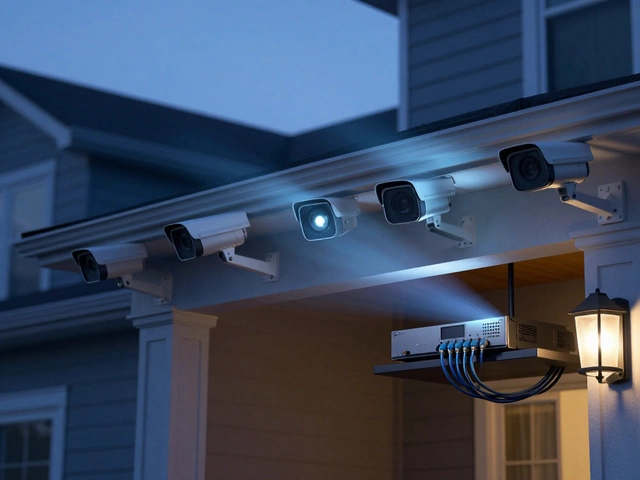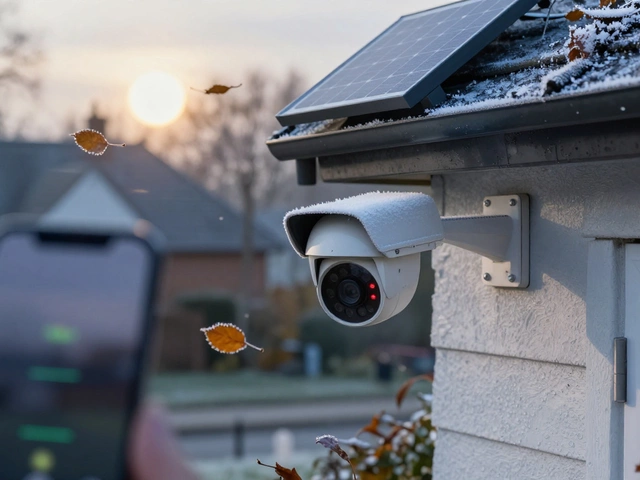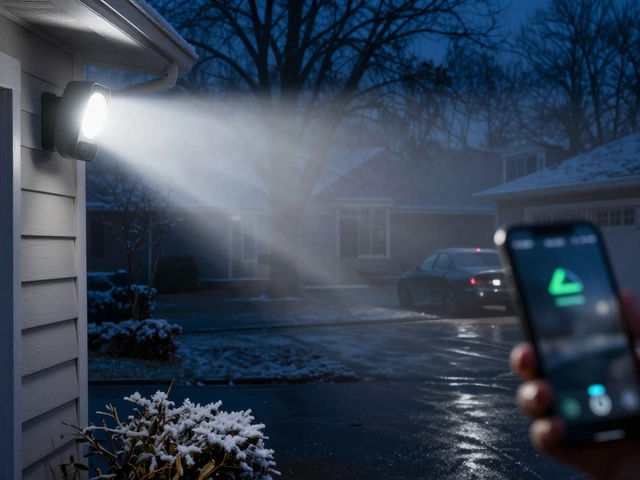So, you’ve set up your baby’s bassinet just a few feet away from your bed. You’re sleeping in the same room, and now you’re staring at that unopened box with a shiny baby monitor, wondering if it’s just going to gather dust.
You’re not alone—lots of new parents wrestle with this question. After all, if you can literally see and hear your baby’s every move, why bother with extra gear? It seems pretty redundant, right? The short answer: sometimes it is, sometimes it’s not. It really depends on how you want your nights to go, what kind of sleeper you are, and if there are moments when you’ll step out—even briefly.
If you’re the sort who wakes up at the slightest peep, having your baby within arm’s reach feels reassuring enough. But let’s be real, not everyone is that light of a sleeper. Some people manage epic power naps even when a garbage truck rolls by. That’s where a monitor can come in handy, even for just hearing those soft little rustles or coughs your ears might miss.
- Why Parents Buy Baby Monitors
- Room Sharing: What Changes?
- When a Monitor Still Makes Sense
- Tips for Nighttime Peace of Mind
Why Parents Buy Baby Monitors
Let’s be honest, the main reason parents grab a baby monitor is simple: peace of mind. Babies can be unpredictable, and those quiet stretches of sleep can make even calm parents a little twitchy. With a monitor, you know right away if your little one is stirring or needs you, instead of guessing or constantly tiptoeing back and forth to check.
Some monitors offer way more than just sound. Video, movement tracking, room temperature, and even heart rate monitoring come packed into some of today’s models. If you want to double-check that chest is rising and falling, or you live in an older house that runs hot or cold, all those extra features can be a huge plus.
- Parents working from home use monitors during naps or solo play, so they don’t have to constantly peek in.
- Big houses make it tough to hear a baby from rooms away—monitors fix that fast.
- Worried about missing subtle changes? Some parents count on the monitor to pick up quieter sounds (like a little cough or hiccup).
- The American Academy of Pediatrics recommends room sharing (not bed sharing) for at least six months, but most parents still transition baby to their own room at some point. A monitor smooths that changeover.
Let’s check out just how many parents actually use one. Here’s a quick snapshot from a 2023 parenting survey that asked new moms and dads about their monitor habits:
| Situation | % of Parents Using Monitors |
|---|---|
| Baby sleeps in own room | 91% |
| Room sharing with parents | 56% |
| Naps during the day | 78% |
So yeah, a lot of parents lean on these gadgets, especially when they start leaving the baby alone for naps or at night. The main driver, though? That instant notification, so parents can actually relax (or catch some sleep themselves) without worry.
Room Sharing: What Changes?
Room sharing flips the whole baby monitor conversation. The American Academy of Pediatrics (AAP) actually suggests parents keep their baby in the same room—with their own sleep space—for at least the first six months. Why? It’s shown to lower the risk of SIDS by up to 50%. That’s a massive drop—definitely not a small detail.
When you and your baby are in the same room, you can pick up on every grunt, whimper, or shuffle. This makes it easier to respond fast if your little one needs you in the middle of the night. For some parents, that means less stress about not hearing their baby cry. Others find themselves waking up to every tiny sound, and let’s be honest, sometimes hearing everything isn’t so helpful for your own sleep.
| Room Sharing | Separate Nursery |
|---|---|
| Baby right next to you | Baby in a different room |
| Less need for a monitor | Baby monitor almost essential |
| Quicker response to baby’s needs | Possible delay if you’re not using a monitor |
| Can disrupt your sleep with every sound | You only hear cries by monitor |
Room sharing also changes your nightly routine. Feedings, diaper changes, and check-ins are faster since you’re right there. No stumbling down the hall at 2 a.m. to check if your baby’s okay. But there’s a flip side—if you’re a heavy sleeper, or if there’s background noise (like fans or an air purifier), there’s still a chance you might miss those super-quiet cues. That’s when a monitor can add a little backup peace of mind.
So, while sharing a room cuts down the basic need for a monitor, it comes down to three things: how deeply you sleep, how noisy your room is, and how many steps you want to save during those late-night wake-ups. If you want pure simplicity, some parents find it’s not worth setting up extra tech if baby’s already within arm’s reach. But if you’re worried about missing something in the quiet, one of today’s modern audio monitors can bridge that gap without overcomplicating things.

When a Monitor Still Makes Sense
You’d think sharing a room means ditching the monitor. Not always. Think about those times you hop in the shower or sneak to the kitchen for coffee, leaving your baby in the bedroom. Suddenly, you’re not right there anymore. A baby monitor comes in clutch – you won’t have to run back every few minutes just to check.
If your baby’s crib is set up on the other side of a bigger bedroom, some of those tiny noises might not actually reach you – especially if you’re a solid sleeper or have a white noise machine humming nearby. Monitors pick up the little wiggles and soft cries you’d miss otherwise.
Here’s another thing: baby monitors help keep anxiety in check, especially at night. According to the American Academy of Pediatrics, about 77% of parents feel less anxious about sleep safety when they use a monitor, even during room sharing. Dr. Tanya Altmann, a well-known pediatrician, points out:
"Many parents benefit from using a monitor for peace of mind, not just to hear a cry, but to see if their baby’s breathing comfortably or to check on movement during naps and nighttime."
Some models go above and beyond audio—video, movement sensors, and even breathing alerts. If you have a preemie or a baby with health issues, those extra features can be a lifesaver.
Here are common scenarios where monitors still make sense even during room sharing:
- You step out of the room to grab laundry, shower, or answer the door.
- You want to check baby’s breathing or movement without getting out of bed.
- Other caregivers or babysitters watch the baby while you’re nearby.
- Your room is large, or the crib is tucked into a corner you can’t easily see or hear.
Here’s some real-world data on why parents use monitors in a room-sharing set-up:
| Reason | % of Parents (2024 Survey) |
|---|---|
| For peace of mind | 65% |
| When they briefly leave the room | 48% |
| To monitor breathing/movement | 30% |
| For overnight feedings or check-ins | 27% |
So, even with baby snuggled up for the night just a few steps away, having a monitor around can be more practical than you’d think. The extra layer of awareness is a legit backup—especially once sleep deprivation sets in and you need any help you can get.
Tips for Nighttime Peace of Mind
It’s tough to relax when you’re not sure what’s normal or what needs your attention in the middle of the night. If your baby’s right there, getting some real peace of mind is doable—you just need a game plan.
- Baby monitor use: If you’re handy with tech, keep the monitor nearby but maybe turn the volume way down or use only the visual alerts. That way, you’re not jumping up at every grunt but you’ll catch anything unusual, like if your baby stops making typical sounds or wakes up coughing.
- Keep essentials close: Night feeds are less of a pain when your diapers, wipes, and bottles are all within arm’s reach. Trust me, fumbling around in the dark just makes everyone grumpy.
- Try a dim nightlight: Babies get startled by bright lights, and so do grown-ups at 2 a.m. A gentle nightlight lets you peek at your baby without blasting your eyes. Choose something with a red or amber hue, since blue lights can mess up sleep cycles.
- Limit unnecessary checks: Checking on your baby every 10 minutes does not help anyone sleep better. Most pediatricians say a bit of quiet fussing is okay. Unless you notice something off, resist the urge to hover.
- Practice safe sleep: The ‘ABC’ rule is still gold—Alone, on their Back, in a Crib or bassinet. Skip blankets and stuffed animals. That way, when you do check, you’re not met with surprises.
- Set your phone to "do not disturb": If you use an app-based monitor, mute non-baby-related notifications. The last thing you need is to wake up thinking it’s the baby when it’s just a group chat meme at midnight.
No setup is 100% perfect, but these tips take away a lot of the guesswork. Once you figure out what helps you sleep soundly, you really do start to settle in for better nights—even if you’re up a couple of times feeding or soothing.






